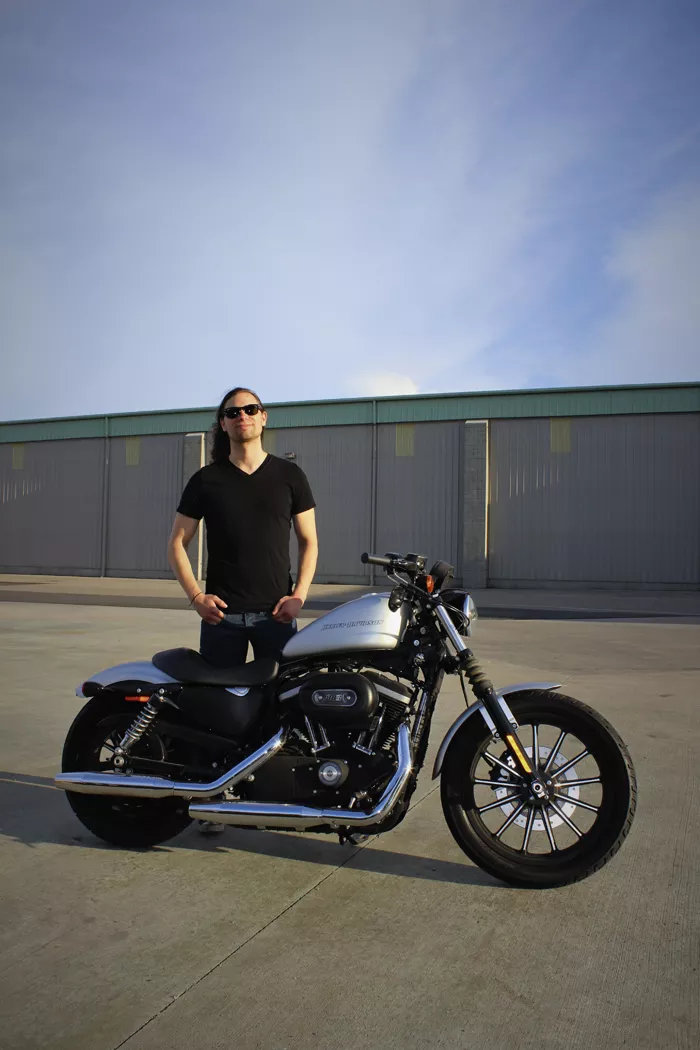
Audio By Carbonatix
[
{
"name": "GPT - Leaderboard - Inline - Content",
"component": "35519556",
"insertPoint": "5th",
"startingPoint": "3",
"requiredCountToDisplay": "3",
"maxInsertions": 100,
"adList": [
{
"adPreset": "LeaderboardInline"
}
]
}
]

Summertime is once again upon us, which means a lot of drivers are opting for two wheels rather than four. What a lot of Michigan drivers take for granted is that there are no motorcycles on the road for four or five months out of the year, depending on how bad our winter is. In that short time, drivers seem to completely forget how to share the road with motorcyclists. On the other hand, bikers perhaps become a bit eager at the beginning of the riding season and forget that they have to ride defensively. When bikers put their bikes away for the winter, they tend to spend that entire time pining for the chance to mount their “steel horse.”
However, the stakes of riding a motorcycle are high. There are things both drivers and riders need to know in order to keep each other safe.
The necessary skills are taught in safety courses. However, as with any other skill, practice makes perfect. There is no better way to learn how to ride than to actually ride. The golden rule of motorcyclists is to ride within your skill level. If you’re shaking like a scared puppy getting onto 696, you probably have no business merging into freeway traffic.
Perhaps the most valuable set of skills a motorcyclist can possess is riding defensively. Avoid tailgating; you shouldn’t be able to read the Braille bumper sticker on the car in front of you. Prepare to react quickly, especially at intersections, where 70 percent of collisions occur. Riding defensively is mostly reflexive, which develops with practice.
It may dramatically damage your street cred, but simply obeying the laws is a very easy way to keep everyone on the road safe. Obey road signs and speed limits. Avoid white-lining, the tactic popular with “One percenters,” where the biker maneuvers between traffic, riding on the white lane markers. Regardless of the rider’s skill level, a motorcycle weaving in and out of traffic can be terrifying to drivers.
Beyond skill level, proper protective gear and clothing should be worn by riders and their passengers. Take the weather into consideration. If it looks like rain, maybe leave the bike at home, or wear something that does not absorb moisture. Aside from riding within your skill level, wearing a helmet is the safest thing you can do. In Michigan, motorcyclists have the choice to wear a helmet or not. Unless the rider is younger than 21, has less than $20,000 in first-party medical benefits, or has not held an endorsement for at least two years or passed an approved safety course, he or she must wear a helmet by law.
In addition to all the precautions bikers must take, drivers are equally responsible for promoting safety on the road. Despite the temptation, everybody should avoid distractions. It could be an incoming text message vibrating your phone or an 8-year-old screaming in the back because they dropped a chicken nugget under the seat, but while behind the wheel, your sole responsibility is driving safely.
Keeping sufficient distance is as important for drivers as it is bikers. Obviously, a motorcycle lacks external protection and stability. So, if a person on a motorcycle gets rear-ended, chances are it will end in injury. One thing that most drivers do not realize is that motorcyclists do not necessarily need to apply the brakes in order to slow down. Riders can downshift, or simply roll off the throttle and neither of which will engage the brake lights. Thus, drivers behind the motorcycle have no warning that they are slowing down.
In the warmer months, drivers must become more aware that motorcycles are on the road. This means conditioning yourself to look for bikes. Pay more attention to your surroundings while changing lanes and at intersections. Because of their size, it’s easy for motorcycles to be obstructed by another vehicle, buildings or shrubbery or get lost in a blind spot. It’s also important to listen for bikes. While it’s true that loud pipes save lives, it’s hard to hear them over a blaring stereo.
Whether you’re riding a motorcycle or driving a car, it’s important to remember that you’re sharing the road with other human beings. Despite the surprisingly resilient stigma, not every person on a motorcycle is affiliated with the Vigilantes or Highwaymen. It’s too easy for us to look at the person in the vehicle next to us as though they have no identity, or at best, a stereotype. All riders on the road share the same goal: reaching their destination safely.





